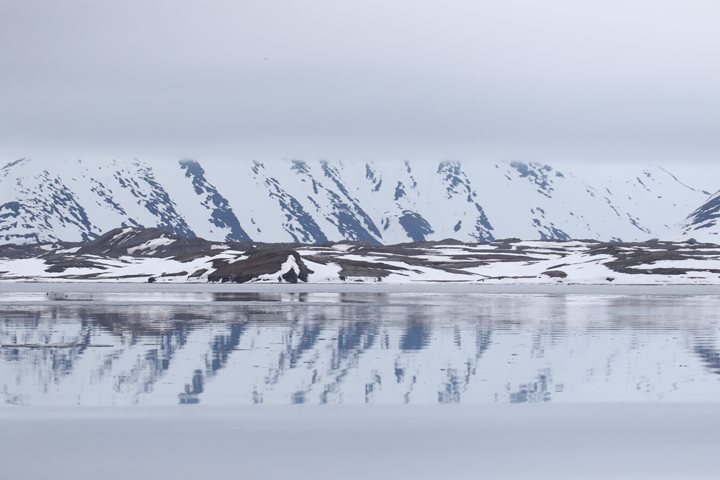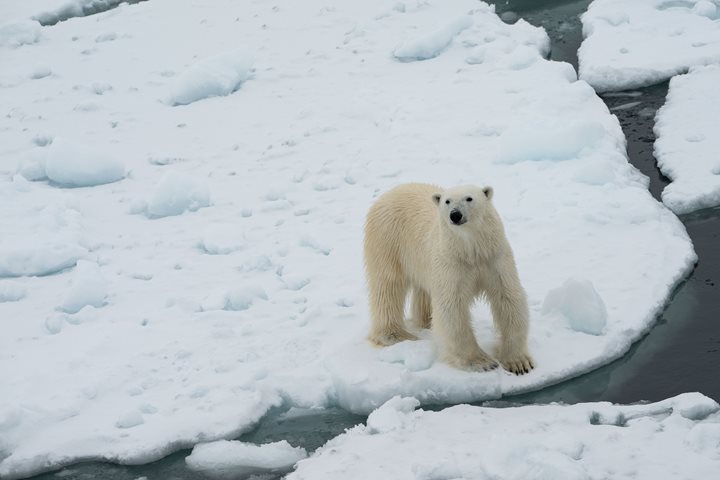Greenland Sea
Although it is generally (though arguably) accepted that it was the Dutch navigator Willem Barentsz who first discovered the island of Spitsbergen in 1596, today found the National Geographic Explorer following in the wake of Englishman Henry Hudson and his ship the Hopewell some 405 years ago.
Henry Hudson had been hired by the Muscovy Company to try and find the Northwest Passage to Cathay (today’s China) on a route above the Arctic Circle. After reaching the northeast coast of what is now known as Greenland, Hudson was forced by ice to give up the quest for the passage and turn east on the 22nd of June, 1607. Here is Hudson’s entry from his ship’s log from June 25th of that year:
“The five and twentieth, the wind scanted and came up at north north-west; we lay north-east two watches, 8 leagues (readers will of course recall that a league is equal to roughly 3 nautical miles). After the wind became variable between the north-east and the north, we steered away east and by north and sometimes east; we had thick fogge…This night was close weather, but small fogge (we use the word night for distinction of time, but long before this the sunne was alway above the horizon, but as yet we could never see him upon the meridian north.) This night, being by our accompt in the latitude of 75 degrees, we saw small flockes of birds, with blacke backs and white bellies, and long speare tayles. We supposed that land was not farre off; but we could not discrie any, with all the diligence which we could use, being so close weather that many times we could not see sixe or seven leagues off.”
In fact Hudson was only halfway to Spitsbergen and would not sight the island until June 27th. Unable to see the sun for a navigational fix, Hudson pushed on, continually changing course to follow the fickle whim of the fast ice edge. And so it was for all on board the National Geographic Explorer today, as the “fogge” came in thick and then lifted, offering brief but tantalizing glimpses of the pack ice edge. At around midday we too were about halfway between Greenland and Spitsbergen, but of course we are armed with the latest ice charts (downloaded from the internet), radar, GPS, and forward-looking sonar to guide us safely through the ever-changing ice front in even the densest fog. How Henry Hudson would marvel at our ability to safely (and quite comfortably) maneuver through this temporary obstacle.
Hudson, along with his crew of 10 men and one boy, safely reached “Whales Bay,” today known to us as Kongsfjorden, on July 14th, 1607. He later pushed on further north along the western side of Spitsbergen, only to be forced south again and eventually back to England, reaching Tilbury Hope on the Thames River on September 15th. Tomorrow should find us in that exact same fjord system, after a safe, but “fogge-filled” passage.
Thank you Henry, for showing us the way!






